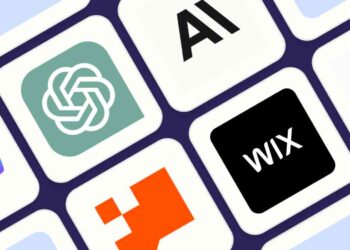Keeping your audience engaged with high-quality, relevant content requires a well-structured content strategy.
However, manually discovering, organizing, and planning content can be time-consuming and inefficient.
AI-powered tools streamline content curation and planning, making it easier to find trending topics, organize content calendars, and optimize publishing strategies. Whether you’re a marketer, blogger, or business owner, AI can help you curate and plan content effortlessly while maximizing engagement and reach.
👉 Key Takeaway:
AI-powered tools automate content discovery, organization, and planning, ensuring efficient workflows and a consistent content strategy.
Step 1: Use AI to Discover High-Quality Content
The Challenge:
Finding relevant, up-to-date content that resonates with your audience can be overwhelming.
How AI Helps:
- AI-powered tools like Feedly AI, BuzzSumo, and Curata scan thousands of sources to discover trending and high-performing content.
- AI analyzes engagement data to recommend content that fits your audience’s interests.
- AI-powered social listening tools track industry conversations and competitor content for valuable insights.
✅ Example:
- AI identifies trending AI marketing articles from authoritative sources, helping you curate content on emerging trends.
Impact:
AI saves time and ensures that curated content is relevant and engaging.
Step 2: Automate Content Filtering and Organization
The Challenge:
Sorting through hundreds of articles, blog posts, and social media updates manually is inefficient.
How AI Helps:
- AI-powered tools categorize content by topic, relevance, and audience engagement.
- AI filters out clickbait and low-quality content, ensuring curated content meets high standards.
- AI recommends content clusters to improve the structure and organization of planned content.
✅ Example:
- AI automatically sorts content into categories like SEO, social media marketing, and AI tools, making it easier to plan and distribute.
Impact:
AI-driven filtering improves workflow efficiency and ensures content remains organized.
Step 3: Personalize Content Curation for Different Audiences
The Challenge:
A one-size-fits-all content approach fails to engage different audience segments.
How AI Helps:
- AI-powered recommendation engines like OneSpot and Persado tailor content based on user behavior and demographics.
- AI-driven tools segment content by audience preferences, ensuring personalized experiences.
- AI dynamically adjusts content recommendations for different audience groups.
✅ Example:
- A B2B audience receives in-depth AI industry reports, while a B2C audience gets short-form insights on AI trends.
Impact:
AI ensures relevance and engagement, leading to higher retention and conversions.
Step 4: Generate Content Ideas with AI-Powered Insights
The Challenge:
Coming up with fresh, engaging content ideas is one of the hardest parts of content planning.
How AI Helps:
- AI tools like ChatGPT, Jasper AI, and Frase generate content ideas based on trending topics and SEO insights.
- AI identifies content gaps and underutilized topics to help create high-value content.
- AI predicts which topics will perform well based on past data.
✅ Example:
- AI suggests “The Future of AI in Content Marketing” based on emerging search trends and engagement data.
Impact:
AI-driven content ideation ensures fresh, relevant topics that align with audience interests.
Step 5: Automate Content Calendar Planning
The Challenge:
Managing a content schedule manually leads to inconsistencies and inefficiencies.
How AI Helps:
- AI-powered tools like CoSchedule, Trello AI, and Notion AI automate content scheduling and workflow management.
- AI suggests optimal publishing dates and times based on audience engagement patterns.
- AI streamlines collaboration, ensuring content teams stay organized and productive.
✅ Example:
- AI schedules blog posts for Tuesdays at 10 AM, based on peak audience engagement times.
Impact:
AI-optimized content calendars ensure consistency, improve efficiency, and maximize audience reach.
Step 6: Optimize Content for SEO with AI
The Challenge:
Creating content without SEO optimization reduces search visibility and traffic.
How AI Helps:
- AI tools like SurferSEO, Clearscope, and MarketMuse analyze top-ranking content to provide SEO recommendations.
- AI suggests keyword placement, meta descriptions, and internal linking strategies.
- AI ensures content is optimized for featured snippets and search intent.
✅ Example:
- AI suggests adding long-tail keywords like “AI-driven content curation tools” to improve SEO rankings.
Impact:
AI-powered SEO boosts search rankings and increases organic traffic.
Step 7: Automate Social Media Content Curation
The Challenge:
Manually sharing curated content across multiple platforms takes too much time.
How AI Helps:
- AI-powered tools like Hootsuite, Buffer AI, and Sprinklr schedule and distribute curated content across social media channels.
- AI suggests best-performing content formats (videos, infographics, carousels) for different platforms.
- AI tracks real-time social engagement and adjusts future curation strategies accordingly.
✅ Example:
- AI schedules a LinkedIn post with an AI marketing article at peak engagement hours for professionals.
Impact:
AI-driven social media curation increases visibility, engagement, and reach.
Step 8: Measure and Optimize Content Performance with AI Analytics
The Challenge:
Without tracking performance, it’s hard to know what’s working and what needs improvement.
How AI Helps:
- AI-powered tools like Google Analytics AI, Parse.ly, and HubSpot AI analyze content engagement, conversions, and ROI.
- AI tracks which curated content resonates most with audiences.
- AI predicts future content trends, helping refine content planning.
✅ Example:
- AI detects that listicles generate 30% more traffic than standard blog posts, suggesting prioritizing list-based content.
Impact:
AI-driven analytics help refine content strategies and maximize results.
Final Thoughts
AI-powered content curation and planning streamline the entire workflow, from content discovery and personalization to scheduling, SEO optimization, and performance tracking. By leveraging AI, businesses can save time, improve engagement, and maintain a consistent content strategy.








